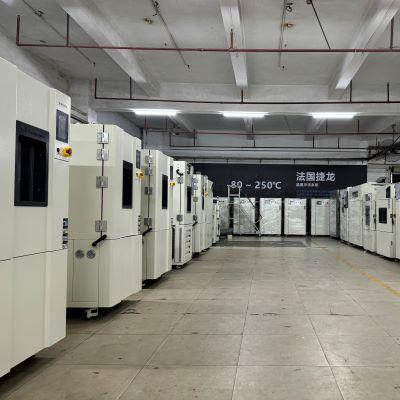How to Prevent Condensation when Conducting Low-temperature Tests in a Temperature Test Chamber
Oct 30, 2025
When conducting low-temperature tests in a temperature test chamber, preventing condensation is a crucial and common issue. Condensation not only affects the accuracy of test results, but may also cause irreversible damage to products, such as short circuits, metal corrosion, and degradation of material performance.
The essence of condensation is that when the surface temperature of the product drops below the "dew point temperature" of the ambient air, water vapor in the air condenses into liquid water on the product surface. Based on this principle, the core idea for preventing condensation is to avoid the surface temperature of the product being lower than the dew point temperature of the ambient air. The specific methods are as follows:
Controlling the rate of temperature change is the most commonly used and effective method. By slowing down the rate of cooling or heating, the temperature of the product can keep up with the changes in ambient temperature, thereby reducing the temperature difference between the two and preventing the surface temperature of the product from falling below the dew point.
2. Use dry air or nitrogen to directly reduce the absolute humidity of the air inside the test chamber, thereby significantly lowering the dew point temperature. Even if the surface of the product is very cold, as long as the dew point of the ambient air is lower, condensation will not occur. It is usually used for products that are extremely sensitive to moisture, such as precision circuit boards and aerospace components, etc.
3. Local heating or insulation can ensure that the surface temperature of key components (such as circuit boards and sensors) is always above the dew point, which is more suitable for products with complex structures where only certain areas are sensitive to humidity.
4. Skillfully arrange the temperature cycle through programming to avoid exposing the product at the stage when condensation is most likely to occur. After the test is completed, do not directly open the box door in a normal temperature and humidity environment. Dry gas should first be introduced into the box and the temperature should be slowly raised to room temperature. After the product temperature has also risen, the box can be opened and taken out.
For a typical low-temperature test, the following process can be followed to prevent condensation to the greatest extent
First, place the product and the test chamber in a standard laboratory environment for a sufficient period of time to stabilize their condition. Subsequently, within the range close to room temperature to "0°", set up one or more short-term insulation platforms. Or maintain it at the target low temperature for a sufficient period of time, during which the temperature inside and outside the product is consistent, and usually no new condensation will form. Also, set a heating rate that is slower than the cooling rate. Set up an insulation platform at the initial stage of temperature rise and when approaching the ambient temperature. After the temperature rise is completed, do not open the door immediately. Keep the box door closed and let the product stand in the box for "30 minutes to 2 hours" (depending on the heat capacity of the product), or introduce dry air into the box to accelerate the equalization process. After confirming that the product temperature is close to the ambient temperature, open the box door and take out the product.
The best practice is to use the above methods in combination. For instance, in most cases, "controlling the temperature variation rate" combined with "optimizing the test program (especially during the recovery stage)" can solve 90% of the condensation problems. For military or automotive electronics tests with strict requirements, it may be necessary to simultaneously stipulate the temperature variation rate and require the introduction of dry air.
続きを読む


